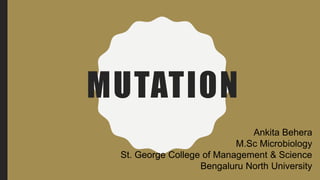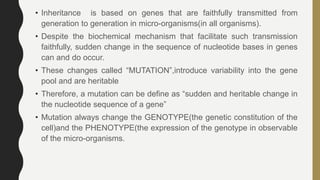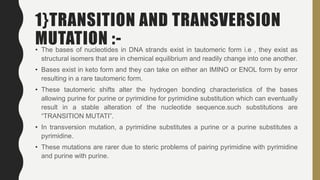Mutations introduce heritable changes in an organism's genetic material. They occur spontaneously due to errors in DNA replication or due to exposure to mutagens. There are two main types of mutations: spontaneous mutations, which occur without external causes, and induced mutations, which are caused by mutagenic agents. Spontaneous mutations result from replication errors or transposable elements, and include transitions, transversions, and frameshift mutations. Induced mutations are caused by mutagens that damage DNA, such as base analogs, agents causing specific mispairing, intercalating agents, and substances like UV radiation. Mutations can have various effects that may or may not result in an observable change in phenotype, depending on whether they are


























